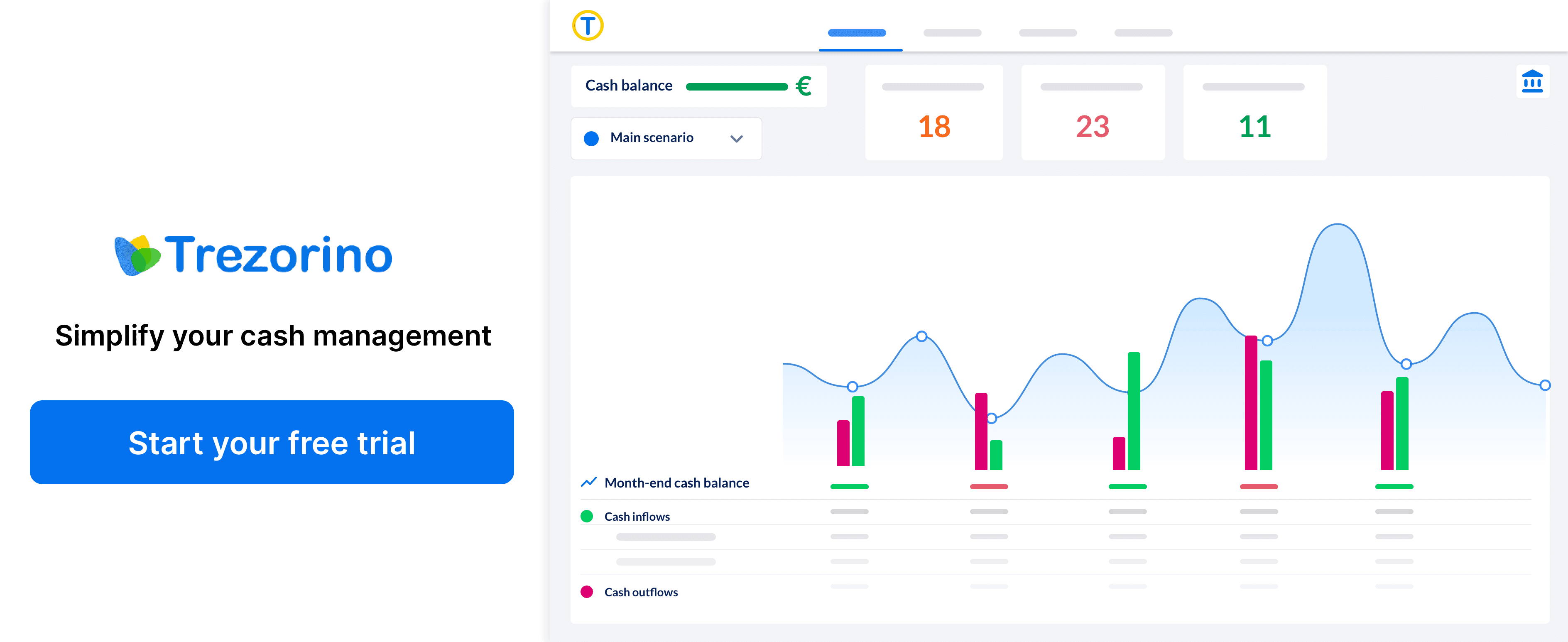How to manage a restaurant's cash flow


Are you a restaurant owner? You have some difficulties to manage your cash flow? We give you all the advices you need to manage the finances of your establishment.
Recently, restaurant owners have been faced with massive changes. There was of course the COVID 19 crisis which forced the closure of restaurants for many months, but also the economic contraction. We can also mention the transformation of the sector with the emergence of "click and collect" as well as the appearance of delivery platforms like UberEats.
Faced with all these upheavals, restaurant owners have had to constantly reinvent themselves and find new strategies to preserve their business.
In these sometimes difficult contexts, here are some tips to optimize your restaurant's cash flow.
Build your cash flow statement
For effective cash flow monitoring, you must first structure your expense and revenue streams through a cash flow statement.
This makes it easier to analyze cash inflows and outflows and to quickly identify levers for growth or cost reduction.
As the saying goes "Prevention is better than cure", your cash flow statement will allow you to see things more clearly and prevent potential cash flow defaults that can slow down your development and cause you a lot of hassle with your banker.
You will be able to anticipate your financing needs, plan your investments at the right time and visualize the possible difficult periods to come.
But how do we do that?
It is very simple! Trezorino integrates a completely digitalized cash flow statement, it is composed of two parts, the first part is a list of income and the second is a list of expenses. Your cash inflows and outflows are broken down month by month for a clear view of your past, present and future cash flow.
In addition, there is a line entitled "End of month cash flow balance" which allows you to see the evolution of your cash flow month by month.
Here's what your cash flow statement might look like:

As you can see we have organized the income and expenses through categories to better analyze and manage the financial flows.
Now that you know what a cash flow statement looks like, let's help you organize it.
Organize your cash flow statement
Let's start with cash inflows!
Here is an example of cash inflows for a restaurant:
Now you have organized your cash inflows, let's move on to the cash outflows.
You must draw up a list of all your company's expenses and classify them by category. Do not forget anything because it can distort the management of your cash flow.
To help you, here is a list of expenses for a restaurant, this list is not exhaustive, it should only serve as a model to establish your own list.
Regular exepenses
Variable expenses
Personnel costs
Banks
Impôts & Taxes
Suppliers
Your cash flow statement is ready!
You always have the possibility at any time to modify the category model according to the evolution of your activity.
Now you can connect your bank and make your forecast.
Centralize your banking transactions
By synchronizing your bank accounts with Trezorino, all your transactions are imported instantly. Our intelligent algorithm assigns the transactions to the categories you define.
Your cash flow statement is enriched, you visualize for each category the amounts of your receipts and your expenses imputed on the past months and on the current month.
After the initialization, your dashboard is updated daily and automatically with new bank transactions.
At this step, you have the opportunity to identify and rigorously analyze your restaurant's fixed costs and establish a plan to reduce them as much as possible. For example, you can carry out a negotiation campaign with your suppliers to review prices and payment terms together.
You now have a cash flow statement enriched with the cash inflows and ouflows of the previous and current months. The analysis of past revenues and expenses allows you to better adjust your forecasts for the coming months.
Next step is to show you how to make a reliable forecast.
Easier and more reliable forecasting
The analysis of your past expenses and revenu allows you to make projections towards the future and define in a few clicks your cash flow forecast month by month. This allows you to avoid unpleasant surprises and to establish a sound action plan to ensure the development of your restaurant.
To establish your cash flow forecast, take into account the seasonality of your sales. If you have a terrace, your indoor sales may be more important in summer than in winter.
Thanks to this cash flow statement you will understand where the most important margins are and on which activity the sales volumes are growing. This allows you to strategically allocate your investments and develop new sales channels.
For your disbursements, in the same way, enter for each month and for each category your projected expenses. For example, you can plan for larger budgets for the purchase of sorbets during the warm periods of the year.
For each expenditure budget, you can see month by month whether it has been met or exceeded.
Please note that your monthly forecast includes VAT.
You can also use different cash flow scenarios to simulate optimistic assumptions for your development or pessimistic ones following an unexpected event.
Cash flow scenarios
For example, you want to carry out work on your restaurant, but you want to determine the impact on your cash flow: What is the best time to carry out the work? What would be the loss of sales during this period? Do you need financing?
If you are planning to open a second restaurant, create your complete business plan in Trezorino, and share it with your banker to find the necessary financing.
Collaborative cash management
If you have several restaurants you can follow their cash flow separately, which allows you to act quickly at the level of the establishment that needs it. You also have the possibility to follow your cash flow in a consolidated way and define your future investments globally.
Each cash flow statement can be shared with your associates or investors, you can also give limited access to a restaurant's cash flow for managers if you have them.
